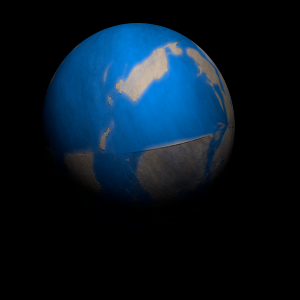|
|
Space Astro
|
Info for exoplanet "Hesu Ki"
| Scientific (actual) data |
|---|
| Name | Kepler-986 b |
| Planet status | Confirmed |
| Radius | 0.211 |
| Orbital period | 56.435 |
| Discovered | 2016 |
| Updated | 2021-02-05 |
| Tconj | 2454980 |
| Publication | Announced on a website |
| Detection type | Primary Transit |
| Alternate names | 2MASS J19322256+4253471 b, K01862.01, KIC 7286173 b, KOI-1862 b, KOI-1862.01, WISE J193222.56+425347.2 b |
| Star name | Kepler-986 |
| Right ascension | 293.09° |
| Declination | 42.9° |
| Mag j | 12.513 |
| Mag h | 12.171 |
| Mag k | 12.107 |
| Star distance | 563 |
| Star metallicity | 0.04 |
| Star mass | 0.96 |
| Star radius | 0.98 |
| Star age | 6.17 |
| Star temperature | 5642 |
| Star alternate names | 2MASS J19322256+4253471, KIC 7286173, KOI-1862, WISE J193222.56+425347.2 |
| Wikipedia article | Kepler-986 b |
Back
| |
| Fictional info (?) |
|---|
| Suggested name | Hesu Ki |
| Planet type | Cold planet |
| The polar regions are constantly below 171°K (-102°C).
Because of its rapid rotation, the planet's shape is that of an oblate spheroid (it has a slight but noticeable bulge around the equator).
This unfriendly place is mostly known for its friendly and interesting carnivores called the "Memohihya'na". They feed on the ground by eating the somewhat smaller "Ryobyate Ma" during the day. Memohihya'na are closely similar to the Mushi but have 5 legs and vary in size from 30 to 70 cm. Most Memohihya'na are known to survive temperatures from -100 to -70°C and sometimes high atmospheric pressure. |
| Estimated population | 60000000 |
| Atmosphere | Water | 94% |
| Methane | 5.7% |
| Carbon dioxide | 0.068% |
| Oxygen | 0.00028% |
| Atmospheric pressure | 1.2 bar |
 |
| Moon | Momunyo'shi | Very small round oceanic comet |
| Tose Buha | Large potato shaped rocky moon |
| Shipesho'a | Medium-sized potato shaped rocky comet |
| Gyomyu | Very small irregular oceanic planetoid |
| Damu-wobu | Small slightly egg-shaped rocky asteroid |
| Pyaiguda-byumobu | Huge irregular crater-filled moon |
| Saka Jieha'nobo | Small round rocky moon |
| Pipyohe-pa | Huge round crater-filled moon |
| Ryurya Rohyuno Sha | Very small slightly egg-shaped gaseous moon |
| Mimyu No | Large slightly egg-shaped crater-filled asteroid |
| Bonuro Byu | Large potato shaped crater-filled moon |
| Rupiba-ya | Medium-sized irregular rocky comet |
| Hyayu Putatsu | Medium-sized slightly egg-shaped rocky asteroid |
| Nebyu Pi | Large slightly egg-shaped ice asteroid |
| Pumupyo-mu | Medium-sized almost round oceanic comet |
| Tojoju Nyu | Large round rocky planetoid |
| Sase-pyagya Pya | Very small almost round ice comet |
| Google search for Hesu ki |
|
Website by Joachim Michaelis
|
|
|
|